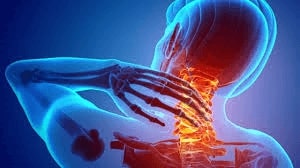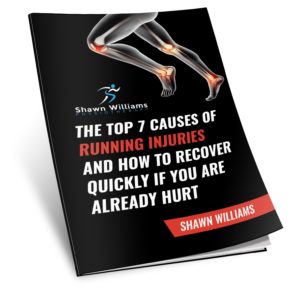Do you suffer from neck pain from sitting at a desk?
What is forward head posture and how is it connected to neck pain from sitting at a desk?
The neutral position of the head usually has the ears sitting over the shoulders, and the shoulder blades down and back, opening the shoulders. This posture works to minimize the stress on the cervical spine. However, for various reasons, many people are unable to maintain a neutral head position; instead, they are resting in forward head posture. Forward head posture means the head is positioned in front of the shoulder making the neck angle forward. One risk factor for developing forward head posture, is sitting at a desk for extended periods of time, as many desks are set-up in ways that promote the head moving forward on the shoulders. Additionally, sitting in one position for too long can cause muscles to tense then fatigue, resulting in other muscles to takeover, exacerbating the forward head posture and the resulting pain.
What causes postural neck pain from sitting?
Forward head posture puts increased pressure on the cervical spine, and when maintained for an extended period of time, can cause alterations to the soft tissues in and around the neck. This means some tissues will become short and tight,contributing to restricted movement and pain. Other muscles become lengthened and strained, causing weakness and pain. Additionally, the vertebrae in your neck and their surrounding structures can also be altered from prolonged forward head posture. Your vertebrae can become stuck which, like shortened muscles, can contribute to movement loss and pain.
Neck pain from sitting caused by the effects of forward head posture can present in a few different ways. It may begin as a general ache and/or stiffness felt in the back or side of the neck. The soreness and tightness can also spread into your head and/or around your shoulder blades. You may also develop areas that feel especially tender to touch.
What can I do at home if you suffer from neck pain with sitting?
1. Levator Scapulae Stretch – One muscle that commonly becomes tight, causing neck pain from sitting and reduced movement is the Levator Scapulae. To stretch this muscle, you turn your head away from the side that feels tight, and then bend your neck as if you were trying to smell your own under arm. You can increase the stretch by using the opposite arm to pull your head toward your under arm, or grabbing the underside of a chair with the arm of the side you are stretching.
2. Desk Ergonomic Correction –A few simple corrections to how your desk is set-up can help prevent forward head posture. One such modification is ensuring your computer screen so that is positioned square to your body, not to one side, minimizing how much you have to turn your head to view the screen. Additionally, you can position the monitor an arms length away and at a height no higher than eye level.

What can a physiotherapist do for me if I have neck pain from sitting?
A physiotherapist will perform a thorough assessment to determine exactly which of your neck muscles are short and which are weak to determine why you are having neck pain from sitting. They can then tailor your treatment, and home exercise program, to lengthen the short muscles, and strengthen the weak muscles.
A physiotherapist can also use hands-on manual therapy techniques to mobilize, or unstick, any vertebrae lacking movement. These mobilizations can help restore function and decrease neck pain from sitting. A physiotherapist with FCAMPT certification can also perform manipulations to restore movement.
Additionally,a physiotherapist can offer recommendations on how to correct your office set-up to prevent future postural neck pain from sitting. Simple changes to your desk layout can make a huge difference in your posture.
I you are in the Toronto area and neck pain from sitting is starting to effect your work productivity or quality of life contact Shawn Williams Physiotherapy at 416-660-4187 to find out more about how a manual physiotherapy approach can stop your neck pain from sitting.




